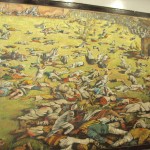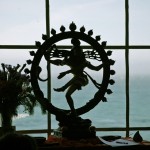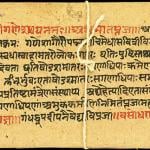The legend of Jesus’ life in India has always been prevalent. Dr. Avtar Singh wrote this piece where he mentioned this. I am producing the details of the legend from the link here for all of you. Its pretty interesting!
- Ancient scrolls reveal that Jesus spent seventeen years in India and Tibet
- From age thirteen to age twenty-nine, he was both a student and teacher of Buddhist and Hindu holy men
- The story of his journey from Jerusalem to Benares was recorded by Brahman historians
- Today they still know him and love him as St. Issa. Their ‘buddha’
In 1894 Nicolas Notovitch published a book called The Unknown Life of Christ. He was a Russian doctor who journeyed extensively throughout Afghanistan, India, and Tibet. Notovitch journeyed through the lovely passes of Bolan, over the Punjab, down into the arid rocky land of Ladak, and into the majestic Vale of Kashmir of the Himalayas. During one of his jouneys he was visiting Leh, the capital of Ladak, near where the buddhist convent Himis is. He had an accident that resulted in his leg being broken. This gave him the unscheduled opportunity to stay awhile at the Himis convent.
Notovitch learned, while he was there, that there existed ancient records of the life of Jesus Christ. In the course of his visit at the great convent, he located a Tibetan translation of the legend and carefully noted in his carnet de voyage over two hundred verses from the curious document known as "The Life of St. Issa."
He was shown two large yellowed volumes containing the biography of St. Issa. Notovitch enlisted a member of his party to translate the Tibetan volumes while he carefully noted each verse in the back pages of his journal.
When he returned to the western world there was much controversy as to the authenticity of the document. He was accused of creating a hoax and was ridiculed as an imposter. In his defense he encouraged a scientific expedition to prove the original tibetan documents existed.
One of his skeptics was Swami Abhedananda. Abhedananda journeyed into the arctic region of the Himalayas, determined to find a copy of the Himis manuscript or to expose the fraud. His book of travels, entitled Kashmir O Tibetti, tells of a visit to the Himis gonpa and includes a Bengali translation of two hundred twenty-four verses essentially the same as the Notovitch text. Abhedananda was thereby convinced of the authenticity of the Issa legend.
Map of Jesus’s eastern travels
Source: Summit University PressIn 1925, another Russian named Nicholas Roerich arrived at Himis. Roerich, was a philosopher and a distinguished scientist. He apparently saw the same documents as Notovitch and Abhedananda. And he recorded in his own travel diary the same legend of St. Issa. Speaking of Issa, Roerich quotes legends which have the estimated antiquity of many centuries.
… He passed his time in several ancient cities of India such as Benares. All loved him because Issa dwelt in peace with Vaishas and Shudras whom he instructed and helped. But the Brahmins and Kshatriyas told him that Brahma forbade those to approach who were created out of his womb and feet. The Vaishas were allowed to listen to the Vedas only on holidays and the Shudras were forbidden not only to be present at the reading of the Vedas, but could not even look at them.
Issa said that man had filled the temples with his abominations. In order to pay homage to metals and stones, man sacrificed his fellows in whom dwells a spark of the Supreme Spirit. Man demeans those who labor by the sweat of their brows, in order to gain the good will of the sluggard who sits at the lavishly set board. But they who deprive their brothers of the common blessing shall be themselves stripped of it.











